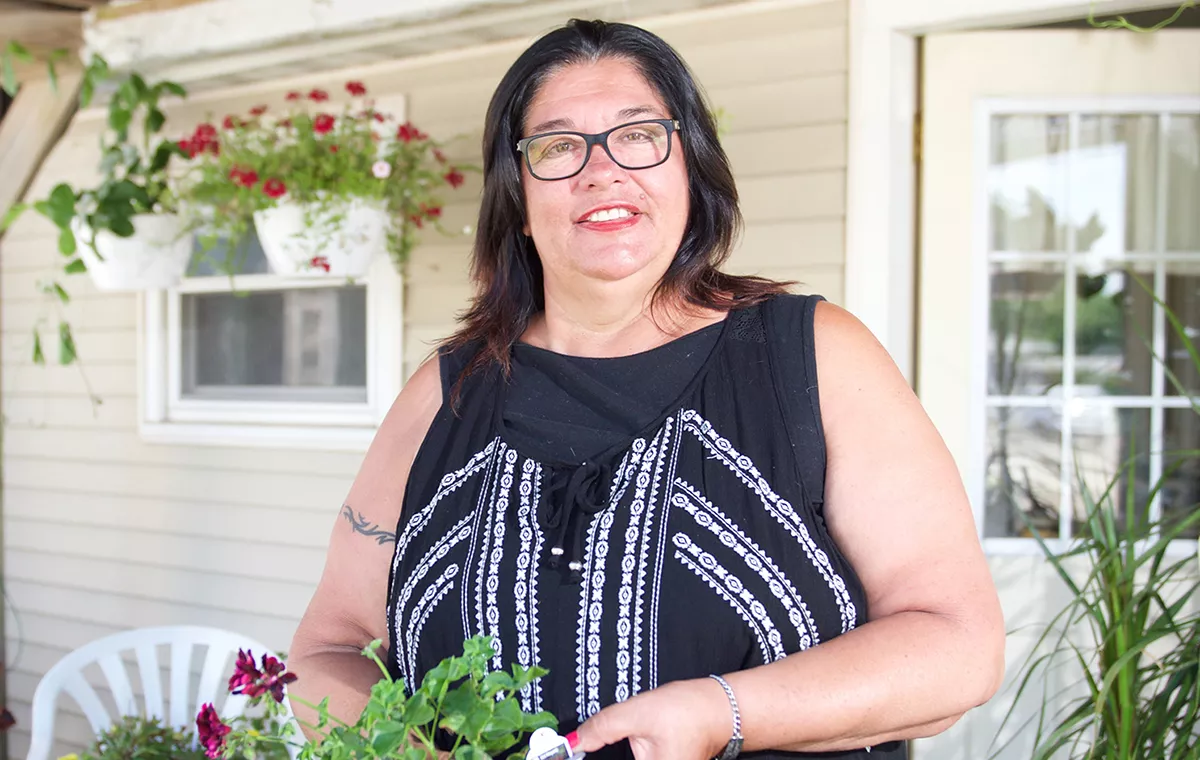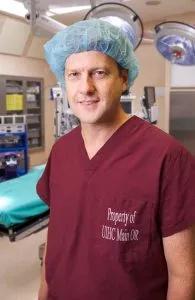Deep brain stimulation surgery helps Parkinson’s patient get her life back to normal

After she was diagnosed with Parkinson’s disease, Linda Stambaugh of Browning, Illinois, saw her life slide downhill.
Parkinson’s is a progressive disease, which means the early symptoms can be mild, but over time they get worse. As Linda’s Parkinson’s progressed, her tremors, falls, and other symptoms became more serious and forced her to leave her job as a corrections officer. Medications weren’t helping her. Eventually, she became dependent on others for nearly everything.
“I couldn’t function properly,” she says. “I couldn’t walk without help. I couldn’t drive for a year. My husband or one of my children had to help me do anything or take me anywhere I needed to go.”
Then Linda’s neurologist accepted a new job in another state. With her quality of life already at an all-time low, she had to find a new doctor. But, Linda says, there was a silver lining: “Before my neurologist left, he told me, ‘I’m going to refer you to one of the best Parkinson’s doctors in the United States.’”
He sent Linda to University of Iowa Hospitals & Clinics to see neurologist Teri Thomsen, MD. Thomsen helped Linda find the right treatment—a surgical procedure called deep brain stimulation (DBS) that changed her life.
People who have Parkinson’s have a shortage of a chemical called dopamine that helps the brain control muscles by delivering messages through the nervous system. The shortage is caused by the slow death of nerve cells that create dopamine. As those cells die, the brain loses its ability to control movement.
The cause of Parkinson’s is unknown, and there is no cure. But medications and changes in lifestyle allow many patients to manage their symptoms and lead normal lives. For Linda, however, things just kept getting worse.

Teri Thomsen, MD
“When I first saw Linda in clinic, she shook so violently that she had difficulty doing even the simplest tasks, such as writing her name,” Thomsen says. “Walking was difficult for her due to slowness and stiffness. Medications just weren’t controlling the symptoms. She needed help to get back her quality of life. The best option that we could offer her was DBS surgery.”
In DBS surgery, two tiny electrodes are implanted in the patient’s brain. Those electrodes are connected by thin wires that run through the head and neck to a neurostimulator, a programmable device similar to a heart pacemaker that is placed under the skin, often in the chest area just below the collarbone. The neurostimulator sends electrical impulses to the brain that can reduce symptoms of Parkinson’s.
Linda went for an evaluation in the DBS clinic, where it was determined that she was an excellent candidate for the surgery. At that point, it was up to Linda and her family to decide if she wanted to proceed. She admits that the decision was not easy.
“I was scared,” she says. “I did a lot of praying. Me and God had a long discussion about it.”
Then, during a camping trip, Linda had a chance encounter that changed her outlook.
“We drove 7,500 miles in an RV, pulled into a campsite, and right beside us was a woman who had just had DBS surgery,” she says. “That was amazing. And she was so encouraging to me.”
Linda had surgery in 2011, performed by UI neurosurgeon Jeremy Greenlee, MD. Within weeks, she was independent again. She could drive. She returned to work, operating a floral shop with a friend.

Jeremy Greenlee, MD
“DBS is not a cure,” Greenlee says, “but it’s one tool to manage the symptoms. If the Parkinson’s gets worse over time, the beauty of DBS is that Dr. Thomsen can just turn up the stimulation to improve symptom relief.”
The procedure is also reversible, Greenlee says. “If someone comes up with a cure for Parkinson’s, we could remove the electrodes, and there would only be a tiny little dot of a lesion in the brain.”
Linda has since become a familiar face at UI Hospitals & Clinics, where she serves as a cheerleader for DBS and the UI’s efforts to help Parkinson’s patients live better lives. In addition to volunteering for DBS research projects, she helps Thomsen demonstrate to medical students what Parkinson’s looks like in a unique way. In a classroom setting, Thomsen turns off Linda’s neurostimulator, causing her symptoms to reappear.
“Linda gives the students insight into how diseases like Parkinson’s affect a person’s life,” Thomsen says. “She shares with them what it’s like to be afraid and in need of medical help. Linda encourages the students to listen to their patients and, above all, be kind.”
Thomsen says the students are extremely grateful and touched by Linda’s unusual method of sharing her experiences with them.
“She’s a very special person,” Thomsen says. “I’m so thankful to her for her time and efforts in educating students, and her work helping advise other patients about DBS surgery.”
Linda takes time to speak to Parkinson’s patients from around the country, supporting them as they try to decide whether they should try DBS.
“You have to have that kind of support,” Linda says. “But I don’t sugarcoat it for them. I tell them the surgery hurt. And not everyone has the same outcome that I had. But I also tell them that two or three weeks after the surgery, I said, ‘I’d do that a million times if I knew I’d get the outcome I have now!’”